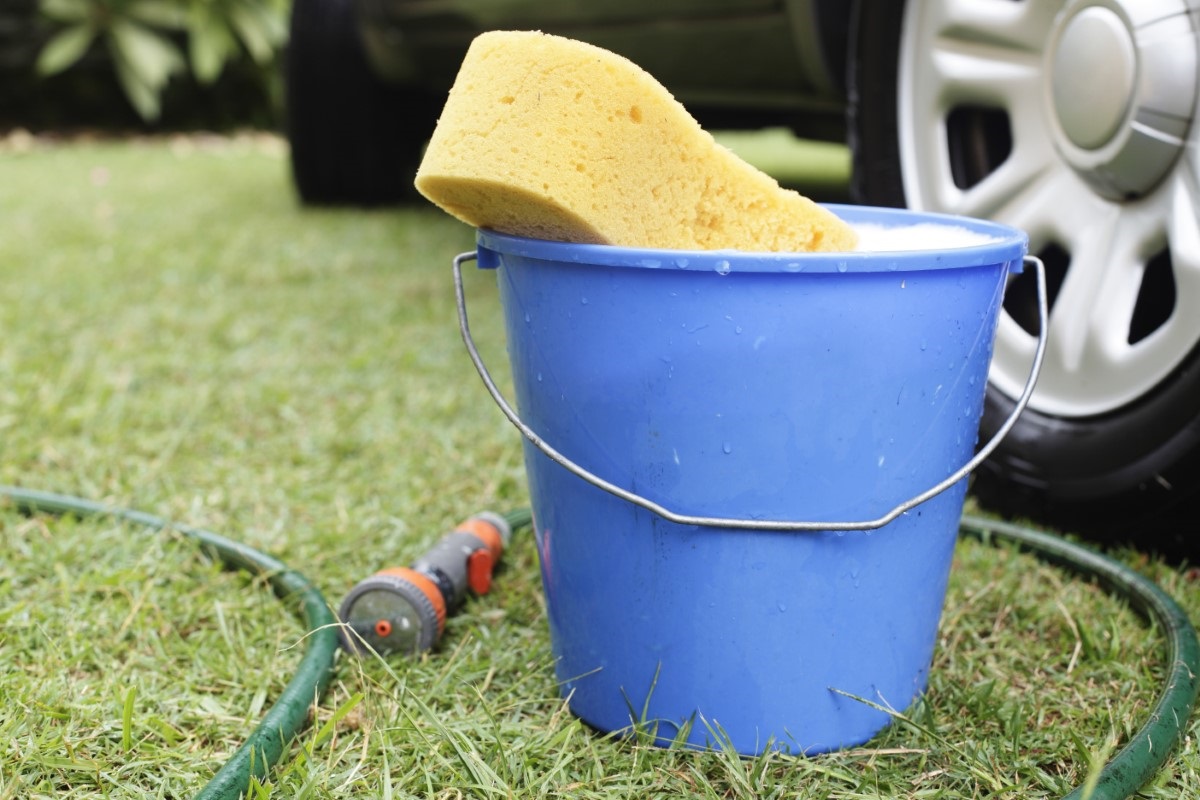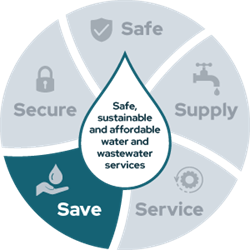Save water outdoors
Typically, around 40% of household water is used outdoors.
Here are some easy ways you can save water outside on your property - by saving water, you save money and reduce your impact on our natural environment. Read more about saving water indoors.
Also, try The Water Conservancy's Water Consumption Calculator. You might be surprised how much water you are using in the garden.
Gardens
- Only water your garden in the cooler hours of the day (early morning and dusk). Early morning watering lets plants use water during the day.
- Occasional deep soakings train plant roots to grow down into the soil and increases their drought tolerance.
- Use drought tolerant plants in your garden (native species are best). Water efficient gardens save time and money.
- Apply 7-10 cm of mulch around plants to help save water loss through evaporation. Mulch can reduce evaporation from soil by up to 70%.
Mulching your garden
Before watering, check the forecast
Save water by using a trigger hose
Lawns
- Lawns use up to 90% of water used in household gardens. Reducing lawn area is an easy way to save water.
- Grass has shallow roots (around 25 mm) so giving your lawn a good soak takes less water than you might think. Drenching the soil won't help your lawn.
- Set your mower to cut 4 cm or higher to avoid ‘scalping’ your lawn.
- Paved areas increase heat radiation and water runoff, use porous paving, pebbles or drought-tolerant ground covers instead. Ask for advice at your local plant nursery.
Install a rainwater tank
Installing a rainwater tank means you rely less on town water supplies, and you're more prepared for times of low rainfall.
Using greywater
Greywater is the wastewater from washing machines, showers, baths and basins. If used safely it's a great option for watering your lawns and garden, and isn’t affected by water restrictions.
Don’t use greywater on edible plants such as vegetables and fruit trees.
Read more about recycled water.
Think before you pull the plug
Water-wise irrigation systems
Drip irrigation systems deliver water at or below the ground surface. They are more efficient than spray irrigation systems.
Using a timer saves lots of water.
Make your own compost
Compost is easy to make and:
- reduces household waste by up to 30%
- keeps more moisture in the soil
- adds nutrients to your garden.
Download our guide to composting(PDF, 754KB)
Council has an organic bin service so your food and garden waste can be collected and turned into compost.
You can buy discounted compost bins from Stotts Creek Resource Recovery Centre (the tip). Worm farms are available at garden centres and hardware stores.
Clever garden design
Use windbreaks, screens and shade from trees to reduce evaporation. When planning your garden, group plants with similar water needs together.
High water use (10 - 20% of your garden)
- Lawns
- Most vegetables
- Fruit trees
- Exotic shrubs (e.g. azaleas and camellias)
- Flowering herbaceous annuals
- Potted plants
- Many bulbs
Moderate water use (20 - 40% of your garden)
- Hardy vegetables (e.g. pumpkin and potato)
- Hardy fruit trees and vines (e.g. nut trees and grapes)
- Many herbs
- Some exotic shrubs
- Day lilies, roses and daisies
Low water use (30 - 60% of your garden)
- Most natives (e.g. banksias, grevilleas, eucalypts)
- Succulents
- Cacti
- Olive trees
- Plumbago, agapanthus and vygies
- Some exotic ornamentals (e.g. bougainvillea)
Pools, pets and cars
Swimming pools
- Pool covers reduce evaporation and can save up to 30,000 litres of water a year.
- Place a shade cloth over parts of the pool.
- Regularly check for leaks in the pipe system and pool.
- Properly maintain your pool water to avoid having to empty polluted water.
- Keep pool water free of dust, leaves and debris to protect the filtration system.
- Don't overfill your pool and minimise bombing and splashing.
- Backwash only when necessary or use a cartridge filter.
Pet washing
- Use a large basin to bath pets, or wash them in an area of the lawn that needs water.
- When refilling your pet's water bowl tip the stale water into a pot plant.
- When cleaning out your aquarium tip the dirty water onto your non-edible plants.
- Support pet groomers who have water-saving measures in place.
Cleaning cars, bikes and boats
- Many commercial car washes recycle their water, and new technology means there are now waterless car washes.
- Wash your car or boat on the lawn so water doesn’t flow down the drain (make sure you’re using biodegradable cleaning chemicals).
- Use a bucket or hose fitted with a spray trigger control.
- Use greywater from your bath or shower to wash your car.
Save water when washing your car
Water restrictions
Check current water restrictions.

